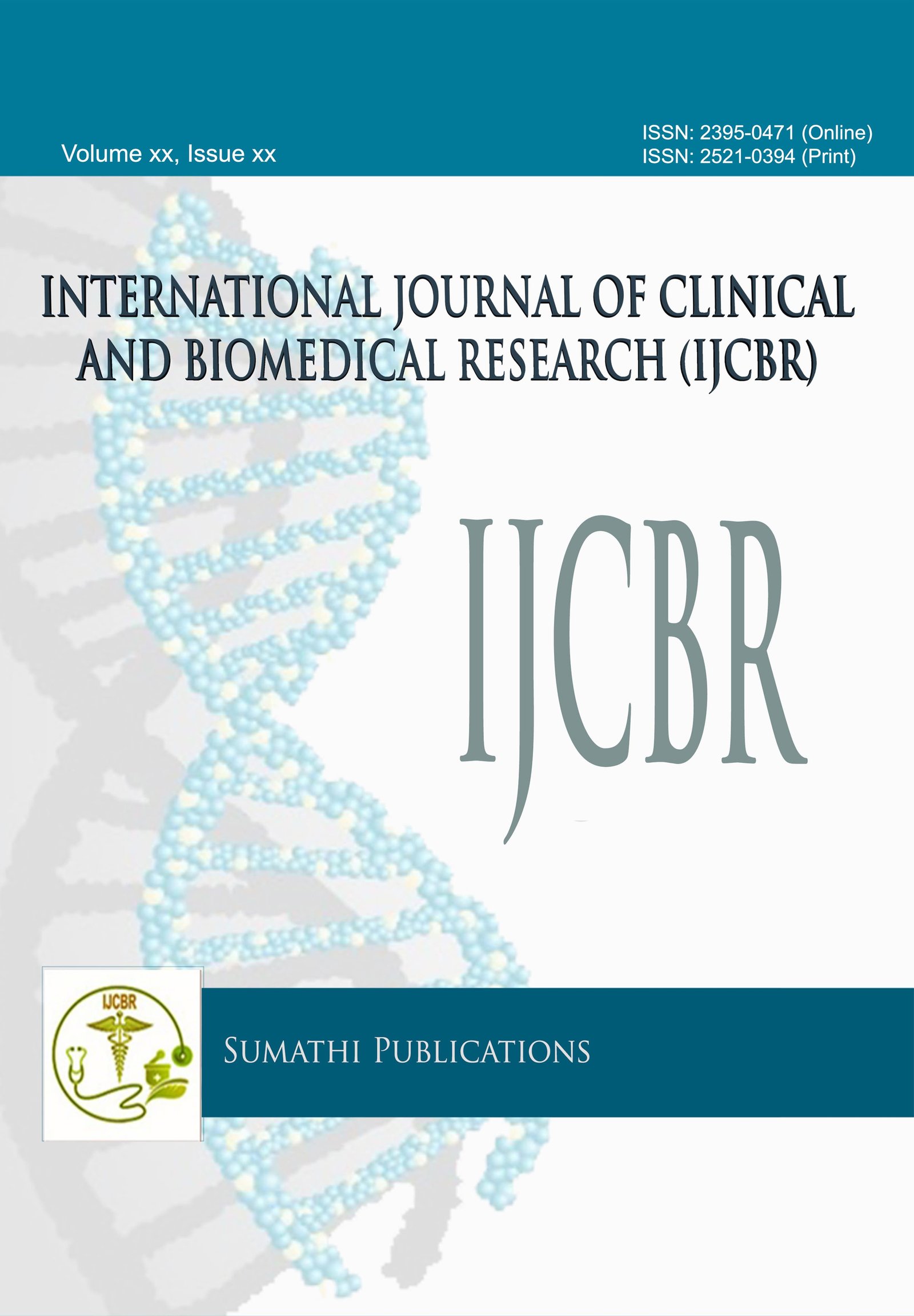DOWN TO THE GROUND ZERO: PERSPECTIVE FROM TISSUE DIAGNOSIS IN NEUROLOGICAL TB
DOI:
https://doi.org/10.31878/ijcbr.2020.62.07Keywords:
Tissue Diagnosis; GeneXpert ; culture; HistopathologyAbstract
BACKGROUND/AIM Central nervous system tuberculosis (CNS-TB), a severe form of extrapulmonary tuberculosis presents with non specific symptom leading to delayed diagnosis and increased morbidity. This study compares different modalities of diagnosis of CNS-TB [Multiplex real-time PCR/ GeneXpert, TB culture, Ziehl-Neelsen staining( Z-N staining) and histopathology].
METHOD This is a cross sectional observational study conducted in the Department of Neuropathology from October 2016 to May 2019. Total 128 brain and spinal cases which were clinically suggestive of TB and operated were evaluated.
RESULT Granuloma, giant cell and necrosis were less evident in spinal TB compared to brain. GeneXpert and culture positivity were higher(100%) in tissue having poorly formed granuloma compared to well formed granuloma. Z-N stain has poor sensitivity (around 32%). Compared to culture GeneXpert was 100% sensitive and 96% specific in brain TB( detected from tissue) and 87% and 89% in spinal TB respectively.
CONCLUSION Combined together all these modalities provide a wholistic approach so that not a single case of tuberculosis is missed.
Downloads
References
2. Ehlers S, Schaible UE. The granuloma in tuberculosis: dynamics of a host-pathogen collusion. Front Immunol. 2013 Jan 7;3:411.
3. Lay G, Poquet Y, Salek-Peyron P, Puissegur MP, et al. Langhans giant cells from M tuberculosis induced human granulomas cannot mediate mycobacterial uptake. J Pathol 2007;211:76–85.85.
4. Lighter J, Rigaud M. Diagnosing childhood tuberculosis: traditional and innovative modalities. Curr Probl Pediatr Adolesc Health Care, March 2009 61.
5. Verdon, R., S. Chevret, J. P. Laissy, and M. Wolff. 1996. Tuberculous meningitis in adults: review of 48 cases. Clin. Infect. Dis. 22:982–988.
6. Yeager H Jr, Lacy J, Smith LR, LeMaistre CA. Quantitative studies of mycobacterial populations in sputum and saliva. Am Rev Respir Dis 1967;95(6):998-1004.
7. Helb D, Jones M et al. Rapid Detection of Mycobacterium tuberculosis and Rifampin Resistance by Use of On-Demand, Near-Patient Technology.Journal of Clinical Microbiology Jan 2010, 48 (1) 229-237
8. Hunter R. L. Tuberculosis as a three-act play: A new paradigm for the pathogenesis of pulmonary tuberculosis. Tuberculosis (Edinb). 2016 March ; 97: 8–17. doi:10.1016/j.tube.2015.11.010.
9. Logani S, Lucas DR, Cheng JD, Ioachim HL, Adsay NV. Spindle cell tumors associated with mycobacteria in lymph nodes of HIV-positive patients: ‘Kaposi sarcoma with mycobacteria’ and ‘mycobacterial pseudotumor’. American Journal of Surgical Pathology, vol. 23, no. 6, pp. 656–661, 1999.
10. Velayati AA, Farnia P, Masjedi MR, Konstantinovich G. Morphological modification by tubercle bacilli: no time for denial. Journal of Infection in Developing Countries 2012:6(1):97–99.
11. Karimi S, Shamaei M, Pourabdollah M, Sadr M, Karbasi M, Kiani A, Bahadori M. Histopathological Findings in Immunohistological Staining of the Granulomatous Tissue Reaction Associated with Tuberculosis. Tuberc Res Treat. 2014;2014:858396.
Downloads
Published
Issue
Section
License
The journal allows the author(s) to hold the copyright without restrictions and will retain publishing rights without restrictions.
The submitted papers are assumed to contain no proprietary material unprotected by patent or patent application; responsibility for technical content and for protection of proprietary material rests solely with the author(s) and their organizations and is not the responsibility of the journal. The main (first/corresponding) author is responsible for ensuring that the article has been seen and approved by all the other authors. It is the responsibility of the author to obtain all necessary copyright release permissions for the use of any copyrighted materials in the manuscript prior to the submission.
What are my rights as an author?
It is important to check the policy for the journal to which you are submitting or publishing to establish your rights as
Author. Journal's standard policies allow the following re-use rights:
- The journal allows the author(s) to hold the copyright without restrictions.
- The journal allows the author(s) to obtain publishing rights without restrictions.
- You may do whatever you wish with the version of the article you submitted to the journal.
- Once the article has been accepted for publication, you may post the accepted version of the article on your own personal website, your department's website or the repository of your institution without any restrictions.
- You may not post the accepted version of the article in any repository other than those listed above (i.e. you may not deposit in the repository of another institution or a subject-matter repository) until 12 months after publication of the article in the journal.
- You may use the published article for your own teaching needs or to supply on an individual basis to research colleagues, provided that such supply is not for commercial purposes.









